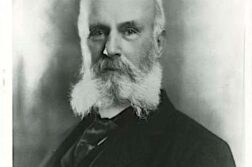FOR MOST of the last 4,000 years, all major, long-running imperial regimes from one end of Asia to the other have had one common feature: the presence of eunuchs in management. Members of the castrated caste were key officials and advisors within the inner courts of Assyria, Babylon, Persia, China, Byzantium, various early Islamic societies, and the Ottoman Empire. Yet the image of an empowered eunuch—a diplomat, a chamberlain, an ambassador—is not the one that most people have of eunuchs today. To call someone a “eunuch” is to label him, in effect, an ineffectual wimp. In our erection-obsessed society, people tend to focus on the eunuch’s penile impotence rather than on the political power or special skills he may have wielded in human resource management.
Granted, castration stands out as one of history’s worst expressions of man’s brutality toward man. But the modern stereotype assumes that this physical change could only produce a pathetic, mutilated creature, lacking family or legacy, a functionary whose sole task was that of impounding women for the carnal pleasure of powerful men.






